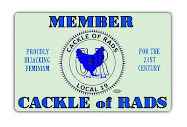Another British documentary about building locomotives:
A few observations:
For a documentary made in 1941/2, there was no mention of the war. You can see why railroad switching yards were attractive targets for bombing raids.
Most American railroads by this time, other than those in coal country, had made the decision to switch to diesel-electric locomotives. The war delayed that by quite some time. The British were reluctant to do so, as their nation had large reserves of coal but, until the opening of the North Sea oil fields, oil had to be imported. The last road locomotive to be made in the US for domestic work was made in 1949. The British made road locomotives up until 1960.
The Swiss still believe.
Friday, September 29, 2017
Subscribe to:
Post Comments (Atom)









3 comments:
Caused me to do some reading, and find:
European railways were mostly destroyed, and rebuilt after WW2 to a standard well above the British network..
Prior to Nationalization, pre and post-WW2, the railways had been neglected and only repaired enough to work.
Diesel locomotives were heavier, per axle/wheel, than the equivalent steam units, necessitating costly upgrades. These upgrades were limited to certain mainlines as thousands of miles of track was abandoned between 1948 and 1975.
Powerful enough diesels to match the top line steam units didn't exist until the late 50's and early 60's.
As you noted, Comrade, coal was an available fuel, oil.wasn't...National Security trumps a lot of things.
More to American roads, dieselization resulted in a decrease of track maintenance. the "nosing" effect of powerful steam locomotives tore the hell out of the tracks; diesels didn't do that. Line abandonment was partially driven by property tax issues, as vacant land was taxed at a far lower rate than working rail lines. the highways that replaced the railroads, of course, weren't taxed at all. (And the towns had to maintain the roads.)
Forgot, diesel freezes, coal doesn't.
Post a Comment